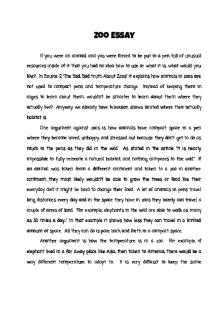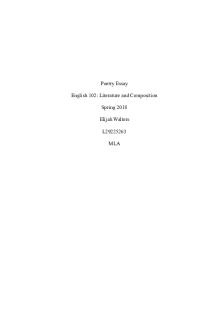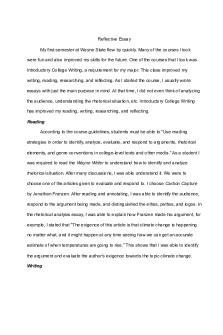Causation Essay - Grade: B PDF

| Title | Causation Essay - Grade: B |
|---|---|
| Course | Tort [30] |
| Institution | Cardiff University |
| Pages | 4 |
| File Size | 164.4 KB |
| File Type | |
| Total Downloads | 24 |
| Total Views | 180 |
Summary
Causation Essay...
Description
Causation Essay PYQ 12-13
PYQ 13-14
PYQ 14-15
PYQ 15-16
PYQ 16-17 “Causation in fact is a simple matter of science whereas cause in law is an attempt to do justice in the individual case. The rules for one are clear and easily applied; the rules for the other are clouded in uncertainty and give little guidance.” To what extent do these statements accurately reflect the law today?
Lord Wright in Lochgelly Iron & Coal Co. v McMullan (1934): “In strict legal analysis, negligence means more than heedless or careless conduct, whether in omission or commission: it properly connotes the complex concept of duty, breach and damage thereby suffered by the person to whom the duty was owing”. Therefore, to bring a successful claim in negligence, causation is vital after establishing duty and proving breach of duty. The purpose of establishing causation is to allocate responsibility for the cost of harm, and to some extent, risks. This essay will look at the … of causation. As stated by Lord Nicholls, the question of causation is analysed in two stages. The first stage is known as the factual cause, which is analysed by using a balance of probabilities test to establish whether the defendant in fact caused the harm. If the first stage was satisfied in the eye of court, the court will then consider the legal aspect of causation, which requires the court to assess whether the link between the conduct and the ensuing loss was sufficiently close. Should any of these test fails, the defendant will escape liability. It is true until certain extent that factual causation is a matter of factual evidence as it is assessed on the balance of probabilities, which mean that the claimant only need to show that there was more than a 50 percent chance that the defendant’s breach caused the harm. The test for factual causation is the ‘but for’ test which requires the court to ask that but for the defendant’s breach, would the harm still occur? In Barnett v Chelsea and Kensington Hospital Management, the court held that even with a correct diagnosis, the man would have died anyway as it was too late to do anything to save him. Thus, this case illustrates that the action will fail even if there is an admission of carelessness. This strict test was used in Wilsher v Essex Area Health Authority, which there were five equally possible competing cause and in Hotson v East Berkshire Area Health Authority where the claimant has 25% chance to avoid permanent disability. However, there were problems as the strict application of ‘but for’ test to every scenario would lead to absurd outcome to the claimant who were not able to claim merely due to the complication of the causes. Hence, various policy reasons have led to the exceptions to the usual ‘but for’ test. In Bonnington Castings v Wardlaw, The claimant contracted pneumoconiosis by inhaling air which contained minute particles of silica during the course of his employment. The defendant was in breach of a statutory duty in failing to provide an extractor fan. Had they installed an extractor fan the number
of particles of silica that the claimant was exposed to would have been reduced, however, there would still be some particles present. it was held that the burden of proof remains on the claimant. However, the claimant only had to demonstrate that the guilty dust had made a material contribution to the disease. He did not have to demonstrate on the balance of probabilities that the guilty dust was the sole cause of the disease. The next example is illustrated by the case of McGhee v National Coal Board. Mcghee, through his job was non-negligently exposed to brick-dust and then negligently not provided with washing facialities, which prolonged the exposure while he travelled home. Subsequently, he developed dermatitis which medical evidence showed was from the exposure. However, the evidence only showed that the prolonged exposure increased the risk of dermatitis but not that this negligent exposure had caused it. Lord Reid felt that there was no distinction between a material contribution to harm and a material increase in risk, although this was rejected in Fairchild. Lord Wilberforce justified liability on the bass that where a person creates a risk by breaching a duty, and injury ensues from within the area of risk, he should bear the loss unless he can show there was another cause. This was a matter of justice as the employer should be taken to foresee the possible injury and thus bear the consequences. At first glance this might seem unfair to defendant who becomes liable for injury which is unclear that he caused, However, it certainly achieves justice for claimant and would seem to be grounded in tort principles such as ideas of corrective justice and loss distribution. A wrong has been done with a foreseeable outcome, the employer is in a better position to bear such a loss through insurance and could prevent liability through better working practices, another aim of tort. Moving on, the case Fairchild v Glenhaven Funeral Services is another problematic situation which the court feels the application of but for test would lead to unjust outcome. The problem here was that the employee had been exposed by a series of negligent employers. Besides, mesothelioma could be caused in a single moment and was not necessarily caused by prolonged exposure. The claimant could not show when the causative exposure occurred and hence could not prove on the balance of probabilities which employer was the factual cause. The law lords held that the but for test produced an unjust result and the claimants deserved to be compensated as there has been clear negligence by the employers. To circumvent this, they resurrected McGhee and approved the material increase of risk interpretation. The final outcome of Fairchild was that each of the negligent employers was jointly and severally liable. The arguments in Baker v Willoughby and Jobling v Associated Dairies Ltd should be considered as well. Contravenes to Baker, House of Lords in Jobling
agreed that although the aim of awarding damages had been taken into consideration it was held that the plaintiff if recovered from the act would be over compensated. Therefore, the defendant’s liability had been ceased at the beginning stages of the disease. Moving on to legal cause, in The Wagon Mound (No.1), the Privy Council stressed the importance of reasonable foreseeability as opposed to ‘directness’ as a basis for determining ‘remoteness’ of damage. This test of legal cause applies both to the ‘threshold’ situation in which the court is trying to establish whether the defendant is liable at all, and in the situation in which it is concerned with establishing the extent of liability. However, since the judgement in The Wagon Mound (No.1), it has become increasingly clear that the foreseeability of damage test is no more conclusive in regard to causation than it is as a test for duty and breach, and that numerous other considerations will come into play (particularly where physical damage rather than economic loss is the basis of the claim). The case also established that once the kind of damage in question can be seen to have been reasonably foreseeable, its extent is then irrelevant: the defendant is liable even though all the consequences could not have been predicted. In this way, English law favours the claimant as against a defendant who is responsible of causing tortious damage of some kind as once the initial threshold of liability is passed, the risk of greater than expected damage occurring lies on the defendant unless the ensuing damage is of a different kind. Example of cases where this generous approach was taken are Hughes v Lord Advocate, Jolley v Sutton London Borough Council and Page v Smith. However, there are some cases with restrictive approach such as …… not necessary favours the claimant. In conclusion, it was true until certain extent that cause in fact is merely a matter of factual evidence whilst cause in a law is a matter of policy, but it was more than that. Factual causation involved more that just factual evidence but also some policy consideration as to corrective justice and loss distribution. On the other hand, legal causation acts as a control mechanism to limit the claims, to prevent the floodgates that might be open up by the lower threshold of factual causation. In tort law, a person cannot be held liable to compensate for harm suffered by another unless there was a causal connection between the harm and that person’s conduct....
Similar Free PDFs

Causation Essay - Grade: B
- 4 Pages

Essay causation - Grade: A
- 3 Pages

Rogerian Essay - Grade: B
- 2 Pages

Zoo Essay - Grade: B+
- 2 Pages

Final Essay - Grade: B+
- 12 Pages

Propaganda Essay - Grade: b
- 4 Pages

Poetry Essay - Grade: B
- 5 Pages

Galileo Essay - Grade: B+
- 6 Pages

Fiction Essay - Grade: B
- 7 Pages

EPQ Essay - Grade: B+
- 10 Pages

Law essay - Grade: B
- 9 Pages

Persuasive Essay - Grade: B
- 3 Pages

Evicted Essay - Grade: B+
- 3 Pages

Charities essay - Grade: B+
- 13 Pages

Reflective Essay - Grade: B
- 4 Pages

Analysis essay - Grade: B+
- 3 Pages
Popular Institutions
- Tinajero National High School - Annex
- Politeknik Caltex Riau
- Yokohama City University
- SGT University
- University of Al-Qadisiyah
- Divine Word College of Vigan
- Techniek College Rotterdam
- Universidade de Santiago
- Universiti Teknologi MARA Cawangan Johor Kampus Pasir Gudang
- Poltekkes Kemenkes Yogyakarta
- Baguio City National High School
- Colegio san marcos
- preparatoria uno
- Centro de Bachillerato Tecnológico Industrial y de Servicios No. 107
- Dalian Maritime University
- Quang Trung Secondary School
- Colegio Tecnológico en Informática
- Corporación Regional de Educación Superior
- Grupo CEDVA
- Dar Al Uloom University
- Centro de Estudios Preuniversitarios de la Universidad Nacional de Ingeniería
- 上智大学
- Aakash International School, Nuna Majara
- San Felipe Neri Catholic School
- Kang Chiao International School - New Taipei City
- Misamis Occidental National High School
- Institución Educativa Escuela Normal Juan Ladrilleros
- Kolehiyo ng Pantukan
- Batanes State College
- Instituto Continental
- Sekolah Menengah Kejuruan Kesehatan Kaltara (Tarakan)
- Colegio de La Inmaculada Concepcion - Cebu